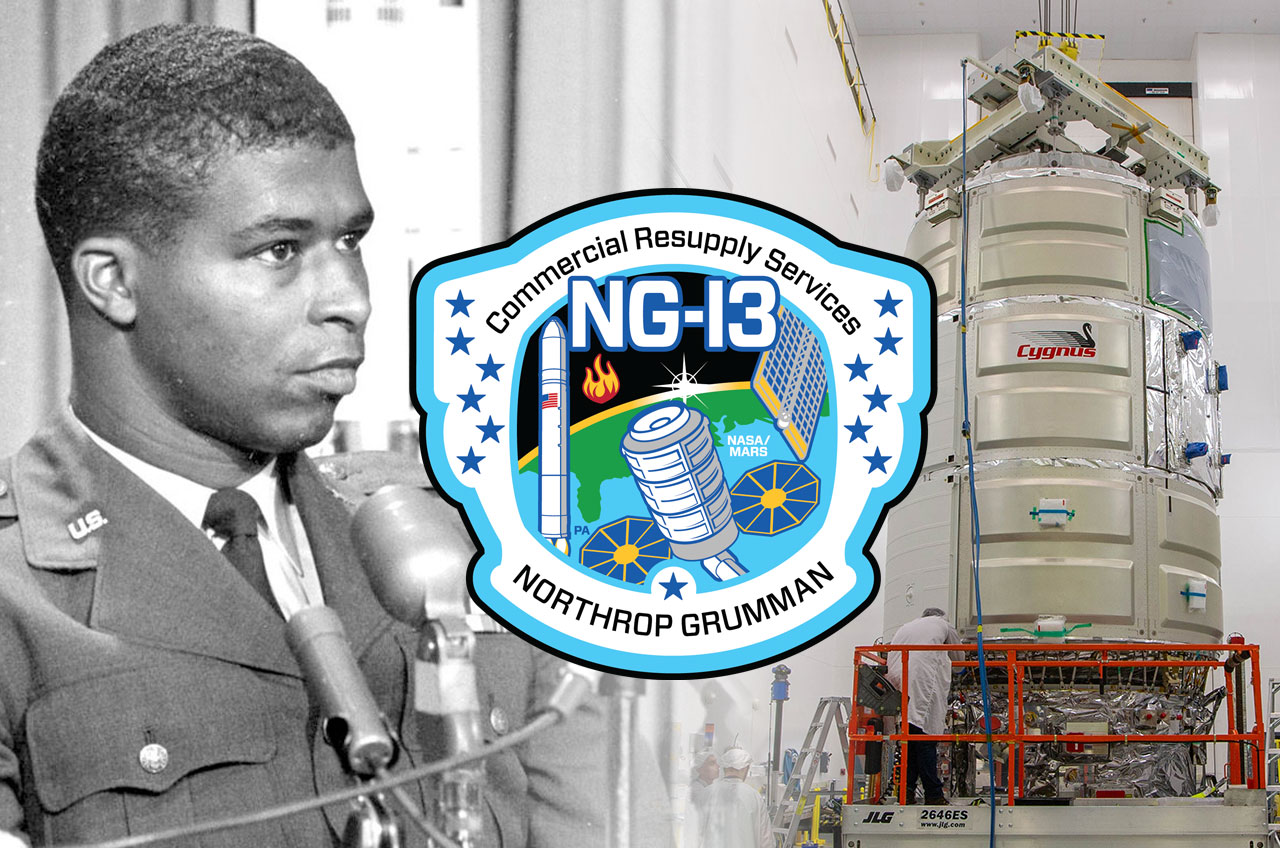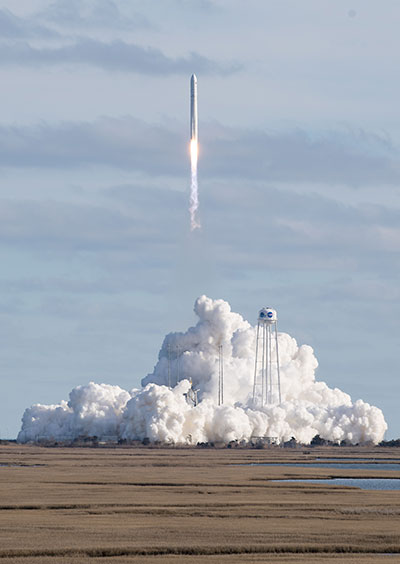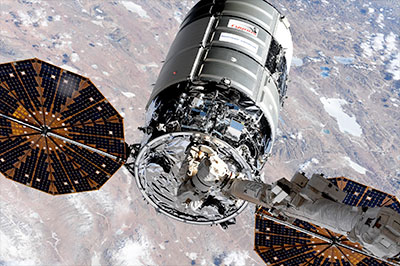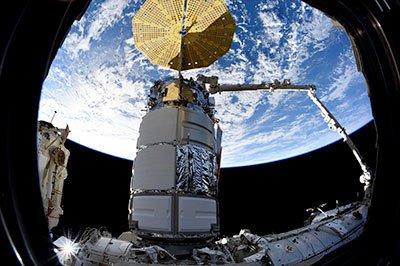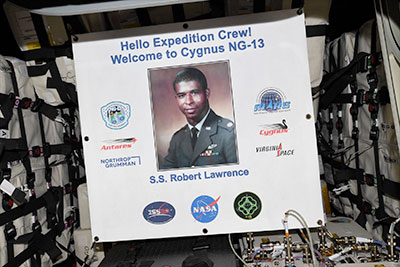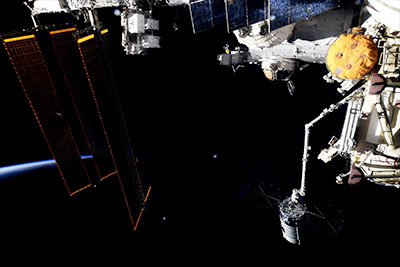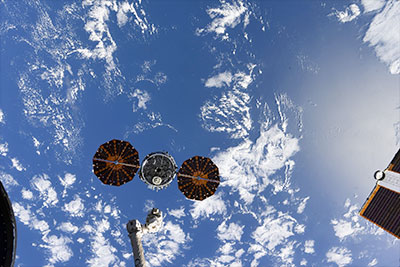New Research Launching to Station Aboard Northrop Grumman's 13th Resupply MissionInvestigations studying tissue culturing, bone loss and phage therapy will be launching, along with more scientific experiments and supplies, to the International Space Station on a Northrop Grumman Cygnus spacecraft. The vehicle launches no earlier than Feb. 9 from NASA's Wallops Flight Facility in Virginia.
This is the second mission under Northrop's Commercial Resupply Services-2 contract with NASA. These resupply missions help NASA deliver critical research to the orbiting lab and increase its ability to conduct new investigations.
Here are details on some of the scientific investigations Northrop Grumman's 13th commercial resupply services mission (NG CRS-13) is delivering to the space station:
Better tissue and cell culturing in space
Mobile SpaceLab, a tissue and cell culturing facility, offers investigators a quick-turnaround platform to perform sophisticated microgravity biology experiments. Such experiments are critical for determining how microgravity affects human physiology and identifying ways to mitigate negative effects. The platform can work in multiple configurations, allowing investigators to tailor the facility to their needs.
Mobile SpaceLab launches and returns on resupply spacecraft. It performs experiments autonomously with ground monitoring. The crew is responsible for moving the payload from the resupply vehicle to a designated ISS EXPRESS Rack and back to a vehicle for return to ground. This process allows investigators to get their research in orbit quickly and gather sophisticated data using the automated capabilities. Experiments can run for up to one month.
A close-up view
The Mochii investigation provides an initial demonstration of a new miniature scanning electron microscope (SEM) with spectroscopy. Mochii will demonstrate real-time, on-site imaging and measurements of micro- and nanostructures aboard the space station. This capability could accelerate answers to many scientific inquiries and mission decisions and serve the public as a powerful and unique microgravity research platform.
The ability to identify small particles is needed for crewed flight and deep space exploration beyond low-Earth Orbit (LEO) since samples cannot be sent back to Earth. Rapid identification of these particles can help keep crews and vehicles safe.
Examining bone loss in microgravity
Crew members experience bone loss in orbit, stemming from the lack of gravity acting on their bones. OsteoOmics investigates the molecular mechanisms that dictate this bone loss by examining osteoblasts, cells in the body that form bone, and osteoclasts, which dissolve bone. A better understanding of these mechanisms could lead to more effective prevention of astronaut bone loss during space missions.
Understanding the cellular mechanisms of bone loss associated with microgravity also helps researchers better understand bone loss associated with a wide range of disorders. This insight could help identify better preventative care and therapeutic treatments for people who experience bone loss due to diseases such as osteopenia and osteoporosis or from prolonged bed rest.
Fighting bacteria with phages
Bacteriophages, or phages, are viruses that specifically invade and destroy bacteria. Discovered in 1915, phages have been used to fight infectious diseases, most notably in Eastern Europe.
With increasing types of bacteria developing resistance to antibiotics, phage therapy offers a possible alternative to traditional antibiotics. In addition, phages can eliminate harmful bacteria without causing large-scale damage to the body's beneficial bacterial population or microbiome. Scientists also can evolve phages in the laboratory to remain potent even if phage-resistant bacteria develop.
Phage Evolution examines the effects of microgravity and radiation exposure on phage and bacterial host interactions, including phage specificity for a bacterial host and host resistance to specific phages. A better understanding of the effects of microgravity and cosmic radiation on bacteriophages and hosts could result in significant developments for phage technology, ultimately helping protect the health of astronauts on future missions.
(Do not) light my fire
The Spacecraft Fire Experiment-IV (Saffire-IV) investigation examines fire development and growth in different materials and environmental conditions, fire detection and monitoring, and post-fire cleanup capabilities. It is part of a series of fire investigations conducted in the Cygnus resupply vehicle after its departure from space station, eliminating exposure of humans or occupied spacecraft to fire danger.
Saffire-IV contributes to fire safety efforts in similar environments on Earth, from submarines to mines, and helps improve general understanding and modeling of fire phenomena.











